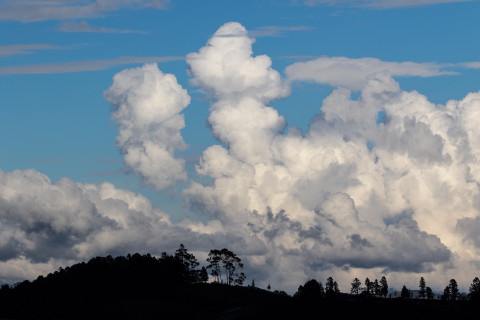Indigenous communities act in sophisticated ways to deter unauthorised mining in Colombia, shows a recently published book by Postdoctoral Researcher Diana Arbeláez-Ruiz from the University of Eastern Finland. The book focuses on Indigenous people and mining in Colombia’s North Cauca region, where multiple armed groups and illicit economies operate. The research the book is based upon was carried out in 2016–2019. As the illegal armed group presence and illicit economies situation in the region has intensified since, the book remains highly topical today.
Published by Routledge, the book documents what the Nasa Indigenous community do to stop unauthorised mining in their territories. This type of mining often has links with violent armed groups. However, there are also Indigenous mining businesses, and local people trying to make an honest living from mining. Staying true to their environmental conservation and peacebuilding identity, the Nasa community still face conflicts and danger navigating a volatile environment.
Indigenous responses to unauthorised mining are sophisticated and costly
Indigenous authorities issue mandates to protect the land and communities. They use agricultural projects to offer economic opportunity to miners. Nasa organisations participate in research and environmental education projects. Community members traverse rural areas monitoring the situation.
The Nasa Indigenous Guard, a volunteer body tasked with protecting life and the land, identifies mining hotspots. They find, for example, illegal armed groups defending mine sites, local miners using heavy and high-impact machinery without authorisation, or local miners working in an artisanal way. Unauthorised miners are not always easy to deter, and this creates conflict and risks. Artisanal miners, however, can enjoy acceptance.
This extensive array of actions still falls short amid limited work opportunities or funds to support new businesses. Youth struggle to live off agriculture or other employment. The financial rewards of gold mining, even without community approval, are too great.
Communities face intense tensions about mining
Material needs and an urge to protect Nasa territories from external miners see some Nasa enter the mining business. While some Indigenous authorities ban mining, others legalise mining areas to prevent external miners from gaining legal access.
In communities that discourage mining, water quality concerns place agriculturalists and miners at odds. Where the Nasa authorities have legalised mining areas, the financial and technical burden, with or without an operating mine, can become too great.
“The Nasa need state and international support to face this situation while protecting Indigenous autonomy and fostering dialogue,” says Arbeláez-Ruiz.
For further information, please contact:
Postdoctoral Researcher Diana Arbeláez-Ruiz, + 358 50 3102674, diana.arbelaez(at)uef.fi
Diana Carolina Arbeláez Ruiz. Indigenous Responses to Mining in Post-Conflict Colombia. Violence, Repression and Peaceful Resistance. Routledge (2023). Book webpage: https://www.routledge.com/Indigenous-Responses-to-Mining-in-Post-Conflict-Colombia-Violence-Repression/Ruiz/p/book/9781032129266
